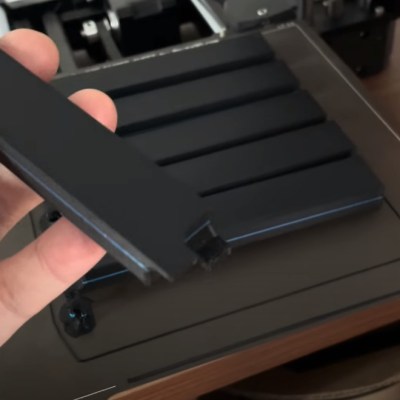3D Printing Your Personal Triboelectric Turbines
A triboelectric nanogenerator (TENG) definitely sounds just like the type of factor you’d have to graduate from Starfleet Engineering to place collectively, but it surely truly operates on the identical precept that’s at work while you rub a balloon your head. Put merely, when friction is utilized to the correct supplies, expenses can construct up sufficient to supply a brief burst {of electrical} power. Do it sufficient, and also you’re on the best way to producing helpful energy.
In a current paper, [Leo N.Y. Cao], [Erming Su], [Zijie Xu], and [Zhong Lin Wang] describe how a practical TENG could be produced on a typical desktop 3D printer. What’s much more spectacular is that the tactic doesn’t seem to require something terribly unique — just a few commercially out there filaments and a bunch of PTFE beads.

So how do your print your individual TENG? First, you load up an electrically conductive PLA filament and lay down a base into which a sequence of channels has been designed. At across the half-way level, you pause the print to insert your PTFE beads, after which swap over to straightforward filament for a number of layers to supply an insulator. Lastly, you pause once more and change again over to the conductive filament for the remainder of the print, encasing the beads contained in the construction.
As [Leo N.Y. Cao] demonstrates within the video under, you then clip results in the highest and backside of the print, and provides it a great shake. If every little thing went proper, LEDs wired as much as your new high-tech maracas ought to flash because the PTFE beads transfer backwards and forwards inside. However there’s a catch. Going again to the balloon-on-the-head instance, the impact at play right here produces excessive voltages however low present — the paper says a TENG containing 60 beads needs to be able to producing pulses of as much as 150 volts.
Naturally, you gained’t get very far with simply considered one of these. Like different power harvesting ideas we’ve lined prior to now, reminiscent of vibratory wind mills, it could take a bunch of those working collectively to generate a helpful quantity of energy. However given how low cost and shortly these printable TENGs could be produced, that doesn’t appear to be it could be an excessive amount of of a problem.